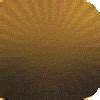
Taxonomy and evolution
Sloths belong to the superorder Xenarthra, a group of placental mammals believed to have evolved in the continent of South America around 60 million years ago.[6] One study found that xenarthrans broke off from other placental mammals around 100 million years ago.[7] Anteaters and armadillos are also included among Xenarthra. The earliest xenarthrans were arboreal herbivores with sturdy vertebral columns, fused pelvises, stubby teeth, and small brains. Sloths are in the taxonomic suborder Folivora[2] of the order Pilosa. These names are from the Latin 'leaf eater' and 'hairy', respectively. Pilosa is one of the smallest of the orders of the mammal class; its only other suborder contains the anteaters.
The Folivora are divided into at least eight families, only two of which have living species; the remainder are entirely extinct (†):[8]
The common ancestor of the two existing sloth genera dates to about 28 million years ago,[8] with similarities between the two- and three- toed sloths an example of convergent evolution to an arboreal lifestyle, "one of the most striking examples of convergent evolution known among mammals".[13] The ancient Xenarthra included a significantly greater variety of species, with a wider distribution, than those of today. Ancient sloths were mostly terrestrial, and some reached sizes that rival those of elephants, as was the case for Megatherium.[4]
Sloths arose in South America during a long period of isolation and eventually spread to a number of the Caribbean islands as well as North America. It is thought that swimming led to oceanic dispersal of pilosans to the Greater Antilles by the Oligocene, and that the megalonychid Pliometanastes and the mylodontid Thinobadistes were able to colonise North America about 9 million years ago, well before the formation of the Isthmus of Panama. The latter development, about 3 million years ago, allowed megatheriids and nothrotheriids to also invade North America as part of the Great American Interchange. Additionally, the nothrotheriid Thalassocnus of the west coast of South America became adapted to a semiaquatic and, eventually, perhaps fully aquatic marine lifestyle.[14] In Peru and Chile, Thalassocnus entered the coastal habitat beginning in the late Miocene. They presumably waded and paddled in the water for short period, but over a span of 4 million years, they eventually evolved into swimming creatures, becoming specialist bottom feeders of seagrasses, similar to the extant sirenians.[15]
Both types of extant tree sloth tend to occupy the same forests; in most areas, a particular species of the somewhat smaller and generally slower-moving three-toed sloth (Bradypus) and a single species of the two-toed type will jointly predominate. Based on morphological comparisons, it was thought the two-toed sloths nested phylogenetically within one of the divisions of the extinct Greater Antilles sloths.[16] Though data has been collected on over 33 different species of sloths by analyzing bone structures, many of the relationships between clades on a phylogenetic tree were unclear.[17] Much of the morphological evidence collected to support the hypothesis of diphyly has been based on the structure of the inner ear.[18]
Recently obtained molecular data from collagen[8] and mitochondrial DNA sequences[19] fall in line with the diphyly (convergent evolution) hypothesis but have overturned some of the other conclusions obtained from morphology. These investigations consistently place two-toed sloths close to mylodontids and three-toed sloths within Megatherioidea, close to Megalonyx, megatheriids and nothrotheriids. They make the previously recognized family Megalonychidae polyphyletic, with both two-toed sloths and Greater Antilles sloths being moved away from Megalonyx. Greater Antilles sloths are now placed in a separate, basal branch of the sloth evolutionary tree.[8][19]
The following sloth family phylogenetic tree is based on collagen and mitochondrial DNA sequence data.[8]
The marine sloths of South America's Pacific coast became extinct at the end of the Pliocene following the closing of the Central American Seaway; the closing caused a cooling trend in the coastal waters which killed off much of the area's seagrass (and which would have also made thermoregulation difficult for the sloths, with their slow metabolism).[20]
Ground sloths disappeared from both North and South America shortly after the appearance of humans about 11,000 years ago. Evidence suggests human hunting contributed to the extinction of the American megafauna. Ground sloth remains found in both North and South America indicate that they were killed, cooked, and eaten by humans.[4] Climate change that came with the end of the last ice age may have also played a role, although previous similar glacial retreats were not associated with similar extinction rates.
Megalocnus and some other Caribbean sloths survived until about 5,000 years ago, long after ground sloths had died out on the mainland, but then went extinct when humans finally colonized the Greater Antilles.[21]
Memiliki Mata Buta di Siang Hari
Sloth memiliki kondisi yang sangat langka yang disebut sebagai monokromasi batang. Hal ini membuat sloth tidak memiliki sel kerucut di mata mereka. Akibatnya, sloth mengalami
total di siang hari dan memiliki sedikit penglihatan di cahaya yang redup atau malam hari, sehingga sloth banyak melakukan aktivitasnya di malam hari.
What do sloth bears eat?
Despite being in the order Carnivora, sloth bears are myrmecophagous, meaning they consume termites and ants. Occasionally, during monsoon season, they are known to dine on fruit in trees such as mango, fig, ebony, etc., as well as flowers. Termites, ants, beetles, and other insects are also of interest to sloth bears year-round, and they are 95% of their diet.
Aside from digging out mounds, they are capable climbers and can climb trees to knock down honeycombs to collect the honey from the ground.
Scientists study sloth bears around India through GPS collars that communicate through satellites and allow them to collect data from the exact location of the animals at any given time. Scientists have studied and collected data on sloth bear attacks, threats to sloth bears, sloth bear denning, relocation of sloth bears, and sloth bear densities. The sloth bear is the least studied and understood bear in the Indian subcontinent.
Here at SloCo, we similarly study sloths through VHF/GPS collars, backpacks, and data loggers. VHF and GPS collars allow scientists to locate sloths and collect information about the sloth and its habitat.
The overall goal of scientists studying sloths is the same for sloth bears: to ensure long-term survival, conservation, and coexistence.
Where do Sloth Bears Live?
Sloth Bears thrive in the Indian subcontinent’s diverse environments like dry forests, grasslands, wet forests, and mountains. They favor rocky outcrops and caves for daytime shelter. The tropical climate in these regions is marked by high temperatures and substantial rainfall, fostering a biodiverse environment.
Sloths, on the other hand, are found in the rainforests of Central and South America. Preferring a life high up in the trees where they hang using their strong claws. Sloths consider the forest canopy their primary home. They flourish in humid environments and rely on a diverse array of leaves as their main source of food.
Surprisingly, both sloth bears and sloths typically lead solitary lives. Sloth bears may be spotted in groups during times of abundant resources, and occasionally, groups of female sloths share the same tree.
Sloth banyak ditemukan di hutan tropis dataran rendah Amerika Selatan dan Amerika Tengah. (Foto: Sloth Conservation)
- Sloth dikenal sebagai hewan termalas di dunia namun jago berenang. Satwa ini termasuk subordo Folivora alias mamalia penghuni pohon yang terkenal karena gerakannya lambat.
Sloth banyak ditemukan di hutan tropis dataran rendah Amerika Selatan dan Amerika Tengah. Ciri-cirinya memiliki kaki panjang, ekor kekar, kepala bulat, dan telinga yang tidak mencolok. Sloth mempunyai penglihatan dan pendengaran yang begitu jelas. Sloth lebih berorientasi pada sentuhan.
Hewan ini memiliki berat sekitar 3,6 - 7,7 kilogram dengan tinggi 0,6 - 0,8 meter tergantung spesiesnya.
Bisa Memutar Kepala 270 Derajat
Sloth berjari tiga memiliki keunikan dibandingkan dengan sloth berjari dua. Sloth spesies ini memiliki tulang leher tambahan yang memungkinkan mereka memutar kepalanya hampir seluruhnya atau sekitar 270 derajat.
Are sloth bears related to sloths?
Contrary to their name, sloth bears and sloths are not closely related, and both belong to entirely different taxonomic orders and families with unique evolutionary histories. For example, sloth bears belong to the order Carnivora, which includes mammals such as dogs, cats, seals, and bears. Within this order, they are also under Ursidae or Bear family.
The name “sloth bear” comes from the bear’s slow-moving behavior and long claws, like a sloth, which led early zoologists and taxonomists to draw parallels between them. However, this similarity is due to convergent evolution, where unrelated species independently develop similar traits in response to similar environments.
Despite these surface resemblances, sloth bears and sloths are genetically and taxonomically distant as well as having strikingly different evolutionary paths.
Sloths, unlike sloth bears, belong to the order Pilosa, sharing it with anteaters and armadillos. Over millions of years, sloths have adapted to a slow-paced arboreal lifestyle, developing features like long arms, curved claws, and a slow metabolism to thrive in treetop habitats where they perform various activities, including eating, sleeping, mating, and giving birth.
Sloth bears….and sloths and bears
Sloth bears got their name in 1791 by English zoologist George Shaw, who encountered the bear and believed the species was related to actual sloths since they shared similar traits, naming them “bear sloths”. Shaw named them Bradypus ursinus, which means something like ‘slow feet bear,’ using the family name of three-fingered sloths, the Genus Bradypus.
The sloth bear goes by many different names throughout the region depending on the language, and once Europeans got involved, the name changed once again. Confusion over whether the bear is a bear or a sloth made it challenging for scientists to classify it under the Latin-based binomial naming system. Once it was indeed determined that it was a bear, they changed the Genus but kept the common name, so “bear sloth” changed to “sloth bear.”
The modern scientific name of the sloth bear, Melursus ursinus, combines Greek and Latin elements. “Melursus” is derived from the Greek “melas” (meaning “black”) and the Latin “ursus” (meaning “bear”), referring to the bear’s dark fur. The specific name “ursinus,” from Latin, translates to “bear-like.”
To add more confusion to the subject, the most common name for sloths in Latin America is ‘oso perezoso’, which means, as you might guess, sloth bear.
Morphology and anatomy
Sloths can be 60 to 80 cm (24 to 31 in) long and, depending on the species, weigh from 3.6 to 7.7 kg (7.9 to 17.0 lb). Two-toed sloths are slightly larger than three-toed sloths.[22] Sloths have long limbs and rounded heads with tiny ears. Three-toed sloths also have stubby tails about 5 to 6 cm (2.0 to 2.4 in) long.
Sloths are unusual among mammals in not having seven cervical vertebrae. Two-toed sloths have five to seven, while three-toed sloths have eight or nine. The other mammals not having seven are the manatees, with six.[23]
Sloths have colour vision but have poor visual acuity. They also have poor hearing. Thus, they rely on their sense of smell and touch to find food.[24]
Sloths have very low metabolic rates (less than half of that expected for a mammal of their size), and low body temperatures: 30 to 34 °C (86 to 93 °F) when active, and still lower when resting. Sloths are heterothermic, meaning their body temperature may vary according to the environment, normally ranging from 25 to 35 °C (77 to 95 °F), but able to drop to as low as 20 °C (68 °F), inducing torpor.[24]
The outer hairs of sloth fur grow in a direction opposite from that of other mammals. In most mammals, hairs grow toward the extremities, but because sloths spend so much time with their limbs above their bodies, their hairs grow away from the extremities to provide protection from the elements while they hang upside down. In most conditions, the fur hosts symbiotic algae, which provide camouflage[25] from predatory jaguars, ocelots,[26] and harpy eagles.[27] Because of the algae, sloth fur is a small ecosystem of its own, hosting many species of commensal and parasitic arthropods.[28] There are a large number of arthropods associated with sloths. These include biting and blood-sucking flies such as mosquitoes and sandflies, triatomine bugs, lice, ticks and mites. Sloths have a highly specific community of commensal beetles, mites and moths.[29] The species of sloths recorded to host arthropods include[29] the pale-throated three-toed sloth, the brown-throated three-toed sloth, and Linnaeus's two-toed sloth. Sloths benefit from their relationship with moths because the moths are responsible for fertilizing algae on the sloth, which provides them with nutrients.[30]
Their limbs are adapted for hanging and grasping, not for supporting their weight. Muscle mass makes up only 25 to 30 percent of their total body weight. Most other mammals have a muscle mass that makes up 40 to 45 percent of their total body weight.[31] Their specialised hands and feet have long, curved claws to allow them to hang upside down from branches without effort,[32] and are used to drag themselves along the ground, since they cannot walk. On three-toed sloths, the arms are 50 percent longer than the legs.[24]
Sloths move only when necessary and even then, very slowly. They usually move at an average speed of 4 m (13 ft) per minute but can move at a marginally higher speed of 4.5 m (15 ft) per minute if they are in immediate danger from a predator. While they sometimes sit on top of branches, they usually eat, sleep, and even give birth hanging from branches. They sometimes remain hanging from branches even after death. On the ground, the maximum speed of sloths is 3 m (9.8 ft) per minute. Two-toed sloths are generally better able than three-toed sloths to disperse between clumps of trees on the ground.[33]
Sloths are surprisingly strong swimmers and can reach speeds of 13.5 m (44 ft) per minute.[34] They use their long arms to paddle through the water and can cross rivers and swim between islands.[35] Sloths can reduce their already slow metabolism even further and slow their heart rate to less than a third of normal, allowing them to hold their breath underwater for up to 40 minutes.[36]
Wild brown-throated three-toed sloths sleep on average 9.6 hours a day.[37] Two-toed sloths are nocturnal.[38] Three-toed sloths are mostly nocturnal but can be active in the day. They spend 90 per cent of their time motionless.[24]
Sloths are solitary animals that rarely interact with one another except during breeding season,[39] though female sloths do sometimes congregate, more so than do males.[40]
Sloths descend about once every eight days to defecate on the ground. The reason and mechanism behind this behavior have long been debated among scientists. There are at least five hypotheses: 1) fertilize trees when feces are deposited at the base of the tree;[41] 2) cover feces and avoid predation;[42][43][44] 3) chemical communication between individuals;[45] 4) pick up trace nutrients in their claws, that are then ingested;[46] and 5) favor a mutualistic relationship with populations of fur moths.[44][46] More recently, a new hypothesis has emerged, which presents evidence against the previous ones and proposes that all current sloths are descendants from species that defecated on the ground, and there simply has not been enough selective pressure to abandon this behavior, since cases of predation during defecation are actually very rare.[47]
Baby sloths learn what to eat by licking the lips of their mother.[48] All sloths eat the leaves of Cecropia.
Two-toed sloths are omnivorous, with a diverse diet of insects, carrion, fruits, leaves and small lizards, ranging over up to 140 hectares (350 acres). Three-toed sloths, on the other hand, are almost entirely herbivorous (plant eaters), with a limited diet of leaves from only a few trees,[39] and no other mammal digests its food as slowly.
They have made adaptations to arboreal browsing. Leaves, their main food source, provide very little energy or nutrients, and do not digest easily, so sloths have large, slow-acting, multi-chambered stomachs in which symbiotic bacteria break down the tough leaves.[39] As much as two-thirds of a well-fed sloth's body weight consists of the contents of its stomach, and the digestive process can take a month or more to complete.
Three-toed sloths go to the ground to urinate and defecate about once a week, digging a hole and covering it afterwards. They go to the same spot each time and are vulnerable to predation while doing so. Considering the large energy expenditure and dangers involved in the journey to the ground, this behaviour has been described as a mystery.[49][50][51] Recent research shows that moths, which live in the sloth's fur, lay eggs in the sloth's feces. When they hatch, the larvae feed on the feces, and when mature fly up onto the sloth above. These moths may have a symbiotic relationship with sloths, as they live in the fur and promote growth of algae, which the sloths eat.[5] Individual sloths tend to spend the bulk of their time feeding on a single "modal" tree; by burying their excreta near the trunk of that tree, they may also help nourish it.
The pale- and brown-throated three-toed sloths mate seasonally, while the maned three-toed sloth breeds at any time of the year. The reproduction of pygmy three-toed sloths is currently unknown. Litters are of one newborn only, after six months' gestation for three-toed, and 12 months for two-toed. Newborns stay with their mother for about five months. In some cases, young sloths die from a fall indirectly because the mothers prove unwilling to leave the safety of the trees to retrieve the young.[53] Females normally bear one baby every year, but sometimes sloths' low level of movement actually keeps females from finding males for longer than one year.[54] Sloths are not particularly sexually dimorphic and several zoos have received sloths of the wrong sex.[55][56]
The average lifespan of two-toed sloths in the wild is currently unknown due to a lack of full-lifespan studies in a natural environment.[57] Median life expectancy in human care is about 16 years, with one individual at the Smithsonian Institution's National Zoo reaching an age of 49 years before her death.[58]
Although habitat is limited to the tropical rainforests of Central and South America, in that environment sloths are successful. On Barro Colorado Island in Panama, sloths have been estimated to constitute 70% of the biomass of arboreal mammals.[59] Four of the six living species are currently rated "least concern"; the maned three-toed sloth (Bradypus torquatus), which inhabits Brazil's dwindling Atlantic Forest, is classified as "vulnerable",[60] while the island-dwelling pygmy three-toed sloth (B. pygmaeus) is critically endangered. Sloths' lower metabolism confines them to the tropics, and they adopt thermoregulation behaviors of cold-blooded animals such as sunning themselves.[61]
The majority of recorded sloth deaths in Costa Rica are due to contact with electrical lines and poachers. Their claws also provide another, unexpected deterrent to human hunters; when hanging upside-down in a tree, they are held in place by the claws themselves and often do not fall down even if shot from below.
Sloths are victims of animal trafficking where they are sold as pets. However, they generally make very poor pets, as they have such a specialized ecology.[62]
The Sloth Institute Costa Rica is known for caring, rehabilitating and releasing sloths back into the wild.[63] Also in Costa Rica, the Aviarios Sloth Sanctuary cares for sloths. It has rehabilitated and returned about 130 individuals to the wild.[64] However, a report in May 2016 featured two former veterinarians from the facility who were critical of the sanctuary's efforts, accusing it of mistreating the animals.[65]
Bebasin Beruang sultan | Super Bear Adventure | zia dereza rizky
Challenges and threats
Both sloth bears and sloths have their own unique set of challenges in the wild. Sloth bears, for example, face deforestation and habitat loss. Forests are cleared for agriculture and urban settlements, resulting in sloth bears losing their home and food sources. Poachers are also an issue since sloth bears’ claws and gallbladders are sold illegally in the wildlife trade business since they are highly valued for medicine and ornamental purposes.
Sloths, both two-fingered and three-fingered, face similar challenges. In the tropical rainforests of Central and South America, rainforests are cut down for logging and converted into farmland and pastures; sloths lose both their homes and food supplies.
Both sloth bears and sloths are grappling with the impacts of human activities that threaten their survival. While each species faces unique challenges based on where and how they live, there is a common thread: most of the hurdles they encounter in the wild can be traced back to human actions.























